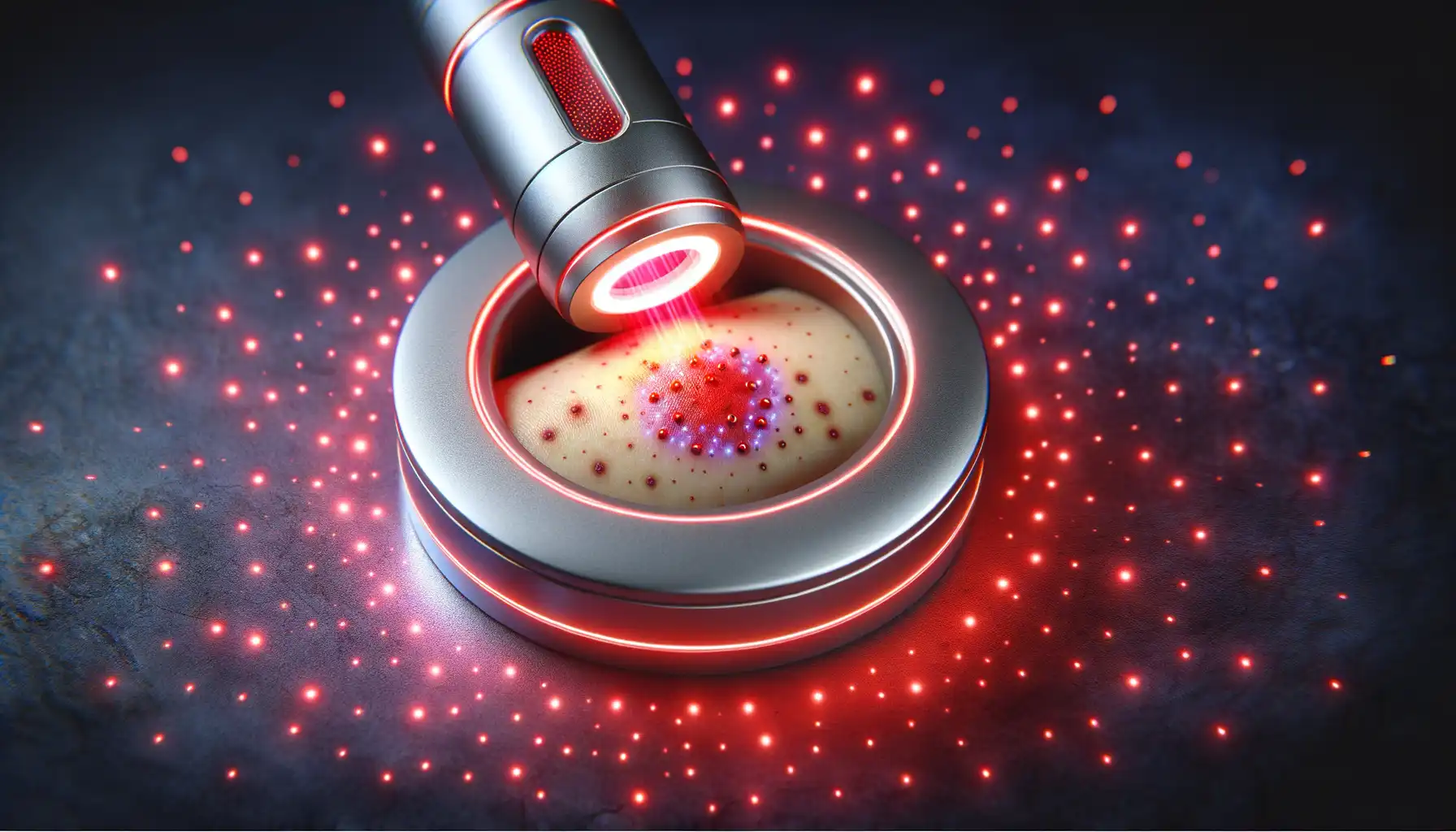Imagine warmth that doesn't just sit on your skin but penetrates deep into your muscles and joints, soothing them from the inside out. That’s the unique experience of an infrared sauna. It’s a tool that’s gaining attention for its potential to ease pain and improve quality of life. Let’s explore how this technology works and what it might do for you.
What Exactly is an Infrared Sauna?
You've probably heard of traditional saunas—hot rooms, steam, and ladles of water poured over fiery rocks. An infrared sauna is a different kind of beast. Instead of heating the air around you to an extreme temperature, it uses special lamps to generate infrared light. This light directly warms your body.
The result? You get a deep, penetrating heat without the suffocating intensity of a traditional sauna. This makes the experience more comfortable and allows many people to stay in longer.
Types of Infrared Technology
Not all infrared is the same. The saunas you see today typically use a combination of different infrared wavelengths, each with its own proposed benefits:
Near-Infrared (NIR): This is the shortest wavelength. It penetrates just below the skin and is often associated with skin health and surface-level tissue repair.
Mid-Infrared (MIR): This wavelength goes a bit deeper, potentially helping with circulation and muscle relaxation.
Far-Infrared (FIR): This is the longest wavelength and the most common type used in saunas. It penetrates deepest into the body’s tissues, muscles, and joints, making it the primary focus for those seeking relief from deep-seated aches and pains.
Most modern saunas are "full-spectrum," meaning they combine all three to offer a broader range of effects.
The Science: How Infrared Heat May Relieve Joint Pain
So, how does sitting in a warm room translate to less joint pain? The magic lies in how your body responds to the deep heat generated by an infrared sauna. The primary keyword here is circulation.
Boosting Blood Flow and Reducing Inflammation
When far-infrared waves warm your body, your core temperature rises. Your body’s natural response is to try and cool down. It does this by widening your blood vessels, a process called vasodilation. Think of it like opening up all the highways and side streets in your circulatory system.
This increased blood flow is fantastic news for stiff, sore joints. Fresh, oxygen-rich blood floods the area, delivering vital nutrients while carrying away metabolic waste products that can contribute to pain and inflammation. Some research suggests that this process may help manage conditions like rheumatoid arthritis. A study published in Clinical Rheumatology found that patients with rheumatoid arthritis and ankylosing spondylitis experienced a significant reduction in pain and stiffness after a 4-week infrared sauna treatment, with no adverse effects. You can read more about it in this article from the National Institutes of Health.
While more research is needed, this improved circulation is a key reason why using an infrared sauna for joint pain is so promising.
Relaxing Muscles and Easing Stiffness
Pain isn't just in the joint itself. The muscles and connective tissues surrounding an arthritic or overworked joint often tense up to protect it. This guarding mechanism creates its own cycle of stiffness and pain.
The penetrating heat from an infrared sauna can help relax these tight neuromuscular structures. As muscles loosen, the pressure on the joint decreases, which can lead to improved flexibility and a greater range of motion. This effect is similar to how a deep-tissue massage or a warm compress works, but on a more systemic level.
Direct Pain Relief Through Heat
Heat has long been used as a simple, effective pain reliever. The warmth from an infrared sauna can help reduce pain signals by acting on nerve endings. This phenomenon, sometimes called heat-induced hypoalgesia, provides temporary but welcome relief. It’s a direct, comforting effect that can make a huge difference in your day-to-day comfort levels.
Who Can Benefit from an Infrared Sauna?
The applications are broad, as many different conditions involve joint pain and stiffness.
Osteoarthritis: For those with wear-and-tear arthritis, the improved circulation and muscle relaxation may help ease the chronic ache in joints like the knees, hips, and hands.
Rheumatoid Arthritis: People with this autoimmune condition may find the gentle heat helps reduce the stiffness and pain associated with inflammatory flare-ups, as suggested by small-scale studies.
Delayed Onset Muscle Soreness (DOMS): Athletes and fitness enthusiasts can use an infrared sauna as a recovery tool. The enhanced blood flow helps clear out lactic acid and other byproducts of intense exercise, potentially shortening recovery time and getting you ready for your next session sooner. The American College of Sports Medicine provides great information on managing muscle soreness.
General Stiffness and Aches: Even if you don't have a specific diagnosis, an infrared sauna can be a wonderful tool for combating the everyday stiffness that comes with age, a sedentary job, or just life itself.
Practical Tips for Your Infrared Sauna Sessions
Ready to give it a try? Here’s a practical guide to using an infrared sauna for joint pain safely and effectively.
How Long and How Hot?
Temperature: infrared saunas operate at lower temperatures than traditional saunas, typically between 120°F and 150°F (49°C to 66°C). Start on the lower end and see how you feel. The goal is a deep, comfortable sweat, not an endurance test.
Session Length: Begin with shorter sessions of 15-20 minutes. As your body adapts, you can gradually work your way up to 30-40 minutes. Listen to your body—if you feel dizzy or unwell, it's time to get out.
Frequency: For chronic pain, consistency is key. Many people find that 3-4 sessions per week yield the best results. For workout recovery, a session right after your exercise can be highly effective.
Hydration is Non-Negotiable
You will sweat—a lot. It’s crucial to hydrate before, during, and after your session. Drink a large glass of water before you go in, and keep a water bottle with you. Afterward, replenish with more water, possibly with added electrolytes if you had a particularly intense sweat. The Centers for Disease Control and Prevention (CDC) offers great tips on staying hydrated.
Safety First: Who Should Be Cautious?
While generally safe, infrared saunas aren't for everyone. It is essential to speak with your doctor before starting if you have any of the following conditions:
Cardiovascular issues (e.g., unstable angina, recent heart attack)
Low blood pressure (hypotension)
Pregnancy
Kidney disease
Any condition that affects your ability to sweat
For more detailed safety information, you can consult resources from major health organizations like the World Health Organization on heart health.
Comparing Infrared Saunas to Other Therapies
How does an infrared sauna stack up against other common pain relief methods?
Heating Pads: A heating pad provides targeted, surface-level heat. An infrared sauna offers systemic, full-body heat that penetrates much deeper.
Hot Tubs: A hot tub combines heat with the buoyancy of water, which can be very soothing. However, infrared saunas provide a dry heat that some prefer, without the chemicals used in tubs.
Red Light Therapy: Often confused with infrared, red light therapy primarily targets cellular energy and skin health. Infrared heat is focused on warming tissues for circulation and relaxation. Many saunas now incorporate both. Check out this overview from the Cleveland Clinic to understand the differences.
Movement and Stretching: An infrared sauna is not a replacement for movement. In fact, they work best together. Using a sauna can warm up your muscles, making post-sauna stretching more effective and comfortable. A resource like this one from Harvard Medical School emphasizes the importance of daily movement.
Your Path to Relief
Using an infrared sauna for joint pain is a journey of personal discovery. What works for one person might need tweaking for another. To maximize your benefits, consider keeping a simple journal. Note the session length, temperature, and how your joints feel afterward. Over time, you’ll identify the perfect routine for your body.
The gentle, penetrating warmth offers a promising way to manage pain, reduce stiffness, and improve your overall sense of well-being. It’s a powerful tool for recovery and relaxation that puts you in control. If you’re looking for a natural, non-invasive way to support your joint health, exploring the world of infrared saunas might be a warm and welcome step in the right direction. Just remember to start slow, stay hydrated, and always consult your doctor before beginning a new health regimen.



